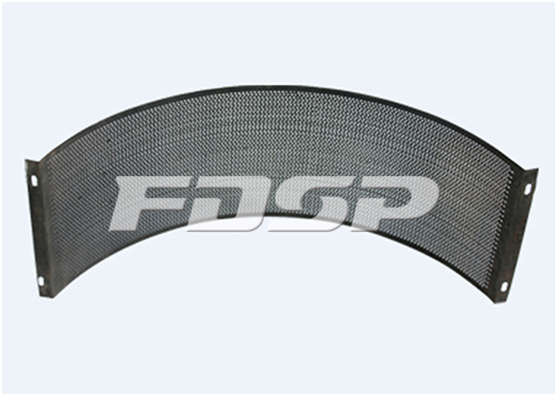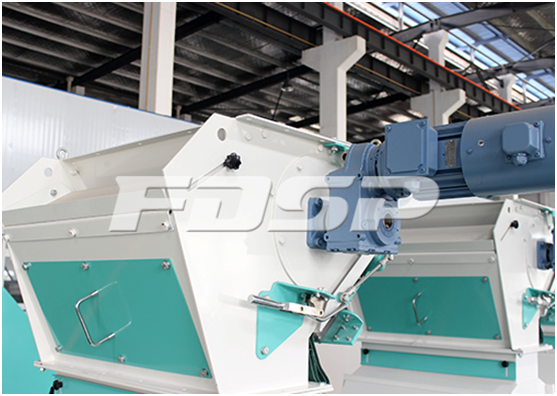Common faults and troubleshooting of feed grinder
2021-05-18
Last time we talked about the causes of abnormal vibration of the grinder and the troubleshooting methods. Today, we will continue to introduce some other common faults and solutions of the feed grinder to everyone. The correct operation and maintenance of the staff is a key link in the normal production of equipment.
(1) Blockage
There are three reasons for the clogging of the grinder: one is that the water content of the raw material is too high; the other is that the hammer is cracked and the screen is damaged; the third is that the operation is improper. When the grinder has a clogging failure, it will not only affect the productivity, if it is severely clogged, it will also overload the motor, or even burn the motor. It should be shut down immediately and repaired according to the following methods:
(1) Check whether the feeding speed is too fast. If so, you should immediately reduce the opening of the material door or close the material door, or adjust the feeding device to control the feeding amount. There are two types of feeders: automatic and manual. Both types of feeders can prevent clogging, but the cost of automatic feeders is much higher than that of manual feeders. Users can choose according to specific conditions.
(2) Check whether the matching of the conveying equipment is appropriate. When the feed pipe is blocked, the discharge port should be dredged first, the unmatched conveying equipment should be replaced, and then the feed volume should be adjusted appropriately to make the equipment operate normally.
(3) Check whether the water content of the raw materials is too high. The water content of the crushed material should be less than 14%. Materials with too high water content are not allowed to enter the crusher.
(4) Check whether the screen is closed and broken. If so, it should be repaired or replaced. The screen is made of stamping sheet steel. When the screen is worn or broken down by foreign objects, if the damaged surface is not large, the method of riveting and welding can be used to repair; if the large area is damaged, a new screen should be replaced.

(2) Bearing overheating
Bearing overheating is generally caused by improper bearing assembly, poor lubrication, and severe wear. The bearing is a more important part of the shredder, and it is also a vulnerable part. During the operation, when the bearing is overheated, the machine should be shut down for inspection and repaired or replaced according to the following methods:
(1) Check whether the heights of the two bearing seats are the same. If the two bearing seats are unbalanced, or the motor rotor and the crusher rotor are not concentric, the bearing will be subject to the impact of the extra load and cause overheating. At this time, stop the machine immediately, find out the cause and adjust its concentricity.
(2) Check whether the fit between the bearing seat and the bearing is proper. If it is too tight or too loose, it should be shut down for maintenance. Remove the bearing and reassemble it.
(3) Check whether the lubricating oil in the bearing is dry. Whether the newly added lubrication is too much or too little, whether the quality of the added lubricating oil meets the standard, etc. The lubricating oil should be filled according to the instructions, and the filling amount is generally appropriate to occupy 2/3 of the bearing room space.
(4) Check whether the bearing is severely worn or damaged. If the abrasion is serious, it should be replaced, and pay attention to strengthen the lubrication. For tapered roller bearings, check the axial clearance of the bearing. The clearance should be zero. About 3 mm, if less than 0.2 mm or greater than 0. 4 mm, it can be adjusted by adding or subtracting the gasket at the bearing cover.

(3) Reverse spray at the feed inlet
The feed inlet of the feed grinder is sprayed back, indicating serious blockage in the machine. The main reasons are: improper adjustment of the air door, blockage of the conveying pipeline, too short or poor air permeability of the powder collection bag, and damaged hammer. When the pulverizer has a failure of the feed inlet back spray, the cause should be found first, and then the targeted maintenance should be carried out:
(1) Check whether the throttle opening is suitable. If it is not suitable, the air door can be adjusted to clear the blockage.
(2) Check whether the powder collecting bag meets the standard. If it does not meet the standard, the powder bag can be replaced to increase air permeability. (3) Check whether the hammer is normal. If the sharp angle of the hammer is blunt, it can be used by adjusting the angle on the reverse side; if the two corners of one end are worn, the head can be adjusted for use. When adjusting the angle or turning, all the hammers should be carried out at the same time. If the four corners of the hammer are worn out, they should be replaced.